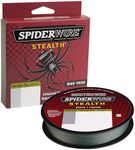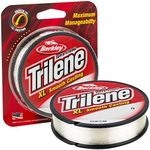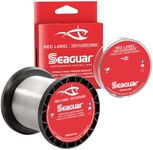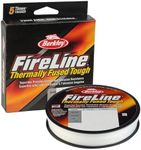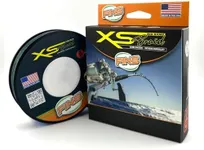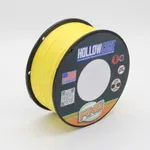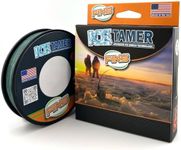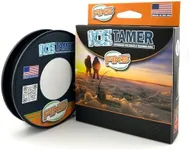Buying Guide for the Best Ice Fishing Line
Choosing the right ice fishing line is crucial for a successful and enjoyable fishing experience. The line you select can significantly impact your ability to catch fish, as well as your overall fishing efficiency. When picking an ice fishing line, consider the type of fish you are targeting, the conditions you will be fishing in, and your personal preferences. Here are some key specifications to consider when selecting an ice fishing line.Line Strength (Pound Test)Line strength, measured in pounds, indicates how much weight the line can handle before breaking. This is important because it determines the size and type of fish you can catch. For smaller fish like panfish, a 2-4 pound test line is usually sufficient. For larger fish like walleye or pike, you may need a 6-10 pound test line or even higher. Choose a line strength based on the fish species you are targeting and the likelihood of encountering larger fish.
Line TypeThere are three main types of ice fishing lines: monofilament, fluorocarbon, and braided. Monofilament is versatile and easy to handle, making it a good choice for beginners. Fluorocarbon is nearly invisible underwater and has low stretch, which is great for detecting bites. Braided lines are extremely strong and have no stretch, making them ideal for deep water and heavy cover. Consider your fishing conditions and experience level when choosing the line type.
Line DiameterLine diameter affects the line's visibility, strength, and how it handles in cold conditions. Thinner lines are less visible to fish and can be more sensitive, but they may also be more prone to breaking. Thicker lines are stronger and more durable but can be more visible and less sensitive. If you are fishing in clear water or targeting finicky fish, a thinner line may be preferable. For rougher conditions or larger fish, a thicker line might be a better choice.
Line ColorLine color can influence your fishing success by affecting the line's visibility to fish. Clear or low-visibility lines are less likely to spook fish, making them ideal for clear water and cautious fish. High-visibility lines, such as bright yellow or green, are easier for anglers to see above the ice, which can be helpful for detecting bites and managing multiple lines. Choose a line color based on the water clarity and your personal preference for visibility.
Cold Weather PerformanceIce fishing lines need to perform well in cold temperatures, as they can become brittle and lose strength in freezing conditions. Some lines are specifically designed for cold weather, with coatings or materials that resist freezing and maintain flexibility. If you plan to fish in extremely cold conditions, look for lines that are rated for cold weather performance to ensure they remain strong and manageable.

